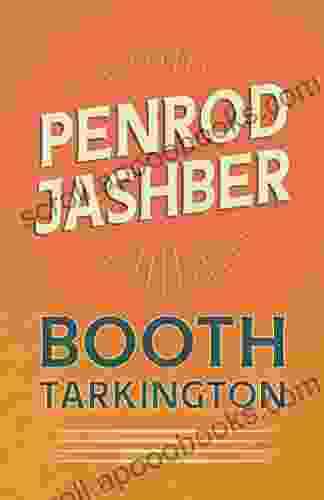The Cold War in the Middle East: 1950-1991 - The Making of the Middle East

The Cold War was a global conflict between the United States and the Soviet Union that lasted from the end of World War II in 1945 to the collapse of the Soviet Union in 1991. The conflict was primarily ideological, with the United States representing capitalism and democracy and the Soviet Union representing communism and authoritarianism.
The Middle East was a key battleground in the Cold War, as both the United States and the Soviet Union sought to gain influence in the region. The region was home to vast oil reserves, and it was also a strategic location for military bases. The Cold War in the Middle East was marked by a series of conflicts and crises, including the Suez Crisis of 1956, the Six-Day War of 1967, and the Yom Kippur War of 1973.
4.1 out of 5
| Language | : | English |
| File size | : | 19664 KB |
| Text-to-Speech | : | Enabled |
| Enhanced typesetting | : | Enabled |
| Word Wise | : | Enabled |
| Print length | : | 79 pages |
| Screen Reader | : | Supported |
The Cold War in the Middle East ended with the collapse of the Soviet Union in 1991. The United States emerged from the conflict as the sole superpower, and it has maintained a strong military presence in the region ever since.
The Cold War in the Middle East had a profound impact on the region. The conflict led to the creation of the state of Israel, the Arab-Israeli conflict, and the rise of Islamic extremism. The Cold War also left a legacy of political instability and economic underdevelopment in the region.
The Origins of the Cold War in the Middle East
The origins of the Cold War in the Middle East can be traced to the end of World War II. In the aftermath of the war, the United States and the Soviet Union emerged as the two dominant superpowers. Both countries sought to gain influence in the Middle East, which was a strategically important region due to its oil reserves and its location.
The United States adopted a policy of containment, which aimed to prevent the spread of communism. The Soviet Union, on the other hand, sought to expand its influence in the Middle East by supporting communist and socialist movements.
The Major Crises and Conflicts of the Cold War in the Middle East
The Cold War in the Middle East was marked by a series of crises and conflicts. The most significant of these included:
- The Suez Crisis of 1956: A conflict between Egypt, Israel, France, and the United Kingdom over the control of the Suez Canal.
- The Six-Day War of 1967: A conflict between Israel and Egypt, Jordan, and Syria that resulted in Israel's victory and the occupation of the West Bank, the Gaza Strip, and the Sinai Peninsula.
- The Yom Kippur War of 1973: A conflict between Israel and Egypt and Syria that resulted in a stalemate.
The End of the Cold War in the Middle East
The Cold War in the Middle East ended with the collapse of the Soviet Union in 1991. The United States emerged from the conflict as the sole superpower, and it has maintained a strong military presence in the region ever since.
The end of the Cold War led to a number of changes in the Middle East. The Arab-Israeli conflict continued, but it became less intense. The rise of Islamic extremism also continued, but it was no longer directly linked to the Cold War.
The Legacy of the Cold War in the Middle East
The Cold War had a profound impact on the Middle East. The conflict led to the creation of the state of Israel, the Arab-Israeli conflict, and the rise of Islamic extremism. The Cold War also left a legacy of political instability and economic underdevelopment in the region.
The legacy of the Cold War in the Middle East is still being felt today. The region remains a volatile and unstable place, and the conflicts that began during the Cold War continue to plague the region.
The Cold War was a major conflict that had a profound impact on the Middle East. The conflict led to the creation of the state of Israel, the Arab-Israeli conflict, and the rise of Islamic extremism. The Cold War also left a legacy of political instability and economic underdevelopment in the region.
The legacy of the Cold War in the Middle East is still being felt today. The region remains a volatile and unstable place, and the conflicts that began during the Cold War continue to plague the region.
Buy the Book
To learn more about the Cold War in the Middle East, I recommend reading the book The Cold War in the Middle East: 1950-1991 - The Making of the Middle East by Martin Sicker. The book provides a comprehensive historical account of the conflict, and it is essential reading for anyone who wants to understand the modern Middle East.
Buy the book on Our Book Library
4.1 out of 5
| Language | : | English |
| File size | : | 19664 KB |
| Text-to-Speech | : | Enabled |
| Enhanced typesetting | : | Enabled |
| Word Wise | : | Enabled |
| Print length | : | 79 pages |
| Screen Reader | : | Supported |
Do you want to contribute by writing guest posts on this blog?
Please contact us and send us a resume of previous articles that you have written.
 Book
Book Novel
Novel Page
Page Chapter
Chapter Text
Text Story
Story Genre
Genre Reader
Reader Library
Library Paperback
Paperback E-book
E-book Magazine
Magazine Newspaper
Newspaper Paragraph
Paragraph Sentence
Sentence Bookmark
Bookmark Shelf
Shelf Glossary
Glossary Bibliography
Bibliography Foreword
Foreword Preface
Preface Synopsis
Synopsis Annotation
Annotation Footnote
Footnote Manuscript
Manuscript Scroll
Scroll Codex
Codex Tome
Tome Bestseller
Bestseller Classics
Classics Library card
Library card Narrative
Narrative Biography
Biography Autobiography
Autobiography Memoir
Memoir Reference
Reference Encyclopedia
Encyclopedia Bob Bearden
Bob Bearden Bob Graham
Bob Graham Brian Belle Fortune
Brian Belle Fortune Brenda Lange
Brenda Lange Brian C Mitchell
Brian C Mitchell Brody Skeens
Brody Skeens Brian D Behnken
Brian D Behnken Bianca Xaviera
Bianca Xaviera Lori Demonia
Lori Demonia Guy Harvey
Guy Harvey Siobhan Phillips
Siobhan Phillips Roger Donenfeld M D
Roger Donenfeld M D Julie Ken
Julie Ken Brian Lumley
Brian Lumley Jennifer Rubenstein
Jennifer Rubenstein Devon Monk
Devon Monk Brent Harold
Brent Harold Betty Dooley Awbrey
Betty Dooley Awbrey Beverly Rosas
Beverly Rosas Brandon Scott
Brandon Scott
Light bulbAdvertise smarter! Our strategic ad space ensures maximum exposure. Reserve your spot today!
 John GrishamFollow ·4.6k
John GrishamFollow ·4.6k John SteinbeckFollow ·2.3k
John SteinbeckFollow ·2.3k Robbie CarterFollow ·11.3k
Robbie CarterFollow ·11.3k George Bernard ShawFollow ·9.2k
George Bernard ShawFollow ·9.2k Herbert CoxFollow ·9.5k
Herbert CoxFollow ·9.5k T.S. EliotFollow ·15.2k
T.S. EliotFollow ·15.2k Amir SimmonsFollow ·19.7k
Amir SimmonsFollow ·19.7k Natsume SōsekiFollow ·10.3k
Natsume SōsekiFollow ·10.3k

 Corey Green
Corey GreenHuman Geography: A Concise Introduction by Gilbert...
A Journey into the Dynamic Realm of...

 Julian Powell
Julian PowellTrain Your Mind to Make Great Art a Habit
Do you dream of...

 Matthew Ward
Matthew WardSmall Town Romance: Heart Compass
Escape to Willow Creek, Where...

 Neil Parker
Neil ParkerMusic, Social Media, and Global Mobility: Exploring...
: The Convergence of Music, Media, and...

 Seth Hayes
Seth HayesUnlock the Potential of Potential Theory with Brooke...
Embark on an...
4.1 out of 5
| Language | : | English |
| File size | : | 19664 KB |
| Text-to-Speech | : | Enabled |
| Enhanced typesetting | : | Enabled |
| Word Wise | : | Enabled |
| Print length | : | 79 pages |
| Screen Reader | : | Supported |














